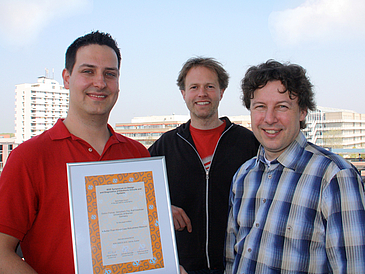How to express the robustness of electronic circuits and systems as a measured value? This is the goal pursued at the University of Bremen by the research group “Computer Architecture” under the leadership of Professor Rolf Drechsler. Results produced by the Bremen computer scientists with the aid of a new measuring method were recently presented at the 13th IEEE International Symposium on Design and Diagnostics of Electronic Circuits and Systems (DDECS) in Vienna: The paper submitted by Stefan Frehse, Görschwin Fey and Rolf Drechsler impressed the experts to the extent that it was acclaimed the best in the “Test” category. Based on a newly developed theory the team demonstrated how it is possible to evaluate the robustness of individual electronic components and fully automatically identify inadequately robust areas in computer chips.
Some background: In our everyday lives all of us rely more and more on all sorts of electronic devices and systems. Whether our cell phone or the brakes system in our automobile – we have come to expect high quality and reliability as a matter of course. Especially in the case of devices which have to withstand severe conditions, robustness plays an important role. Automobiles, for instance, are expected to function just as well in the Arctic as in the desert. And our cell phone must survive the occasional fall from our hands.
The idea developed by the Drechsler team for their method to measure robustness is really quite logical: They completely disregard any “worst-case scenario” because, although theoretically possible, it is in reality never going to occur. To take an example: The meals served everyday in the university dining hall ? each lunchtime some 5,000 meals go over the counter, comprising ten different dishes. The chef never thinks of the worst-case scenario; namely, everybody chooses the same dish. No, he relies on experience values. The eventuality that everyone will choose the same dish is never taken into account ? because it will never happen. This permits optimization and cost efficiency. This simple observation is at the heart of the new method developed by the Bremen computer scientists. It helps in deciding which adaptations have to be made to computer chips in order to increase their safety and functionality. In a nutshell: in order to increase the overall robustness of computer components as a whole.
More information can be obtained from Prof. Dr. Rolf Drechsler, phone 0421 218-63932, e-mail drechslerprotect me ?!uni-bremenprotect me ?!.de, or Dr. Görschwin Fey, phone 0421 218-63944, e-mail feyprotect me ?!informatik.uni-bremenprotect me ?!.de.

